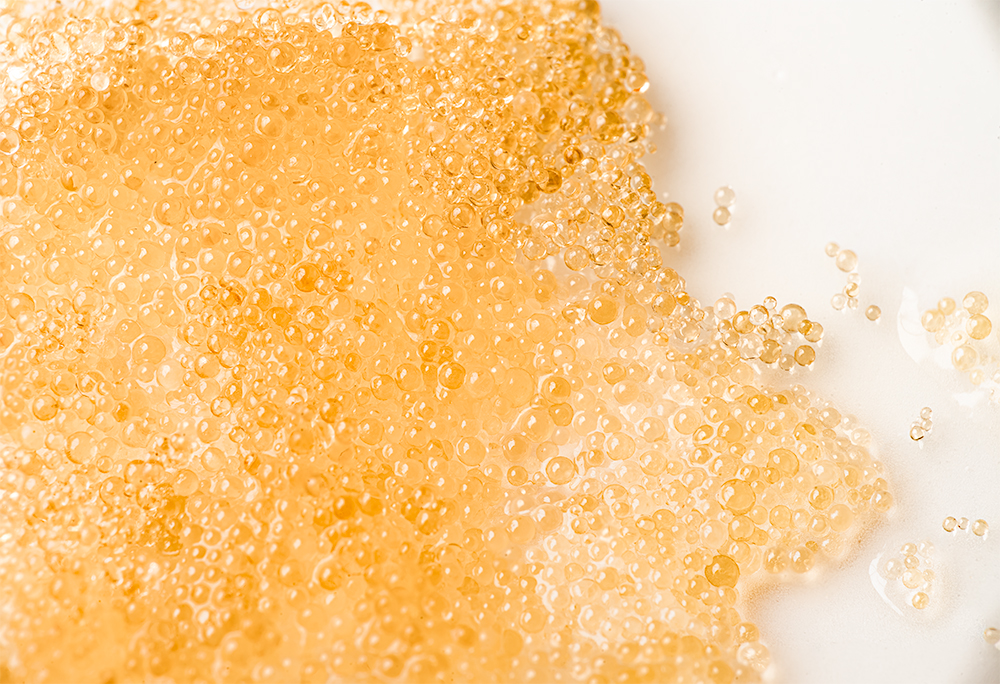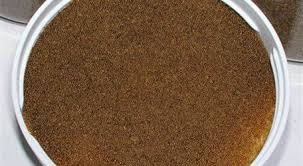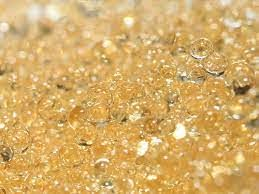At its core, ion exchange resin is a type of small, highly porous spherical material made from an organic polymer substrate (such as styrene-divinylbenzene copolymer). Its most distinctive feature is that it can exchange specific ions in a liquid system without changing its own structural integrity — this "selective ion swapping" ability is the key to its application in purification scenarios.
From the perspective of physical form, ion exchange resin beads are extremely small (usually requiring observation under a microscope, with magnifications of 2.5x to 10x to clearly see their structure, as mentioned in the guide). These beads have a highly porous internal structure, which greatly increases the specific surface area and provides sufficient active sites for ion exchange reactions. At the same time, the guide also emphasizes the safety attributes of the resin: it may irritate the eyes, and the floor may be slippery when spilled. Therefore, it needs to be stored in a ventilated environment, avoiding sunlight exposure, freezing and drying, and the Material Safety Data Sheet (MSDS) must be read before use — these safety details are essential for the correct handling and application of the resin.
In terms of certification standards, high-quality ion exchange resins (such as those provided by Ionic Systems) usually meet WQA NSF/ANSI 44 & 61 standards. These standards strictly regulate the material safety, performance stability and water purification effect of the resin, ensuring that it can be safely used in drinking water treatment and industrial purification scenarios.

Ion Exchange Resin Is: A "Ion Swapper" Driven by Active Site Binding
The working principle of ion exchange resin is based on the specific binding and exchange of ions by the active sites on its surface. To understand this process, we can break it down into three core steps, combined with the practical example of water softening mentioned in the guide:
Step 1: Contact — Water Flows Through the Resin Column
When the liquid (such as hard water containing calcium ions) to be treated passes through the column filled with ion exchange resin beads, the ions in the water fully contact the surface of the resin beads. The porous structure of the resin ensures that the water can penetrate into the interior of the beads, maximizing the contact area between ions and active sites.
Step 2: Binding — Unwanted Ions Are Captured by Active Sites
The surface of the resin is covered with chemically tailored active sites: for cation exchange resins, these active sites are negatively charged and can specifically attract positively charged ions (cations) such as calcium (Ca²⁺) and magnesium (Mg²⁺); for anion exchange resins, the active sites are positively charged and can capture negatively charged ions (anions) such as chloride (Cl⁻) and sulfate (SO₄²⁻). Taking hard water softening as an example, the calcium ions in the water will be preferentially bound to the active sites of the cation resin, while the original sodium ions (Na⁺) on the resin are released.
Step 3: Exchange — Resin Releases Target Ions to Complete the Cycle
While the unwanted ions are bound to the active sites, the resin releases the ions it carries (such as sodium ions in cation resins) into the liquid. This "one-in-one-out" ion swapping process ensures that the resin itself remains structurally stable, and the liquid after treatment achieves the purpose of removing specific impurities. The guide specifically mentions that this process is reversible — when the resin is saturated (i.e., most active sites are occupied by unwanted ions), it can be regenerated by adding a regenerant (such as salt water for cation resins), so that the resin can be reused, which greatly improves its economic value.

Ion Exchange Resin Is: A Multi-Type System Adapted to Diverse Purification Needs
According to the type of ions exchanged, ion exchange resins can be divided into three main categories, each with unique characteristics and application scenarios. The guide clearly outlines this classification system, and we can further expand its technical details:
1. Cation Exchange Resins: Targeting Positively Charged Ions
Cation exchange resins have negatively charged active sites (such as sulfonic acid groups) and are mainly used to remove cations in liquids. In addition to the calcium and magnesium ions mentioned in the guide (for water softening), they can also remove heavy metal cations such as lead (Pb²⁺) and copper (Cu²⁺). Typical application scenarios include:
Industrial boiler feedwater softening: Prevent scaling caused by calcium and magnesium ions, improve heat exchange efficiency.
Drinking water treatment: Reduce the content of heavy metal cations to meet national drinking water standards.
2. Anion Exchange Resins: Capturing Negatively Charged Ions
Anion exchange resins have positively charged active sites (such as quaternary ammonium groups) and are dedicated to removing anions. The guide lists common target anions such as chloride and sulfate; in fact, they can also efficiently remove nitrate (NO₃⁻) and silica (SiO₂), which are crucial for high-purity water preparation. For example:
Semiconductor industry: Remove trace anions in ultrapure water to avoid affecting chip manufacturing accuracy.
Power plant condensate treatment: Reduce silica content to prevent corrosion of turbine equipment.
3. Mixed-Bed Resins: Integrating Dual Purification Capabilities
Mixed-bed resins are physical mixtures of cation and anion exchange resins in a certain proportion. They can simultaneously remove cations and anions in a single treatment process, avoiding the need for multiple separate columns and significantly improving purification efficiency and water quality. The guide particularly points out that mixed-bed resins are "particularly useful for window cleaners" — in the Reach & Wash©️ system widely used by modern window cleaners, mixed-bed resins can produce hundreds of liters of high-purity water per day, ensuring that the glass surface is free of water spots after cleaning. In addition, mixed-bed resins are also the core material in industrial ultrapure water systems (such as pharmaceutical water and electronic grade water).

Ion Exchange Resin Is: An Indispensable Material in Multiple Industrial Fields
The application scope of ion exchange resin is far beyond water treatment. Combined with the introduction in the guide and industrial practice, we can summarize its typical application fields into four categories, highlighting its versatility:
1. Industrial Water Purification: The Core of Large-Scale Systems
Large-scale industrial water purification centers (such as thermal power plants, chemical plants) are the main users of ion exchange resins. The guide mentions that these centers "require vast amounts of mixed-bed resin" — taking thermal power plants as an example, cation and anion resins are used in series to treat boiler feedwater, removing hardness ions and anionic impurities, while mixed-bed resins further polish the water quality to meet the high-purity requirements of the power cycle. Ionic Systems, as a professional supplier, provides a large number of stock resins for such projects, ensuring the continuous operation of the purification system.
2. Specialized Purification: Chemical, Metal and Pharmaceutical Industries
Chemical purification: In the production process of organic compounds (such as sweeteners), ion exchange resins are used to remove ionic impurities in raw materials, improving product purity and stability.
Metal refinery: Extract and separate precious metals (such as gold and silver) from ore leachate, or recover heavy metals from industrial wastewater to achieve resource recycling and environmental protection.
Pharmaceutical industry: Purify pharmaceutical intermediates and injectable water, ensuring that the product does not contain harmful ions, which meets the GMP (Good Manufacturing Practice) standards.
3. Daily Professional Applications: Window Cleaning Water Preparation
A unique application scenario mentioned in the guide is window cleaning. Modern window cleaners using the Reach & Wash©️ system need to use high-purity water to avoid water spots on the glass surface. Mixed-bed ion exchange resins can efficiently remove all cations and anions in tap water, producing pure water with a resistivity close to 18.2 MΩ·cm. The guide emphasizes that Ionic Systems' specially selected premium resins can "produce high levels of purity for as long as possible" and maintain low prices, which is well recognized by the UK window cleaning market.
4. Drinking Water Treatment: Ensuring Water Safety for Residents
Residential water softeners and drinking water purifiers also widely use ion exchange resins. Cation resins remove calcium and magnesium ions to solve the problem of hard water; anion resins remove nitrate and fluoride ions to improve water taste and safety. Resins that meet WQA NSF/ANSI 44 & 61 standards can directly contact drinking water without releasing harmful substances, ensuring the health of residents.
Conclusion: Ion Exchange Resin Is a Cornerstone of Modern Purification Technology
From the definition of porous bead materials to the "ion swapper" working mechanism, from the multi-type classification system to the cross-industry application layout, ion exchange resin has proven to be a cornerstone material in modern purification technology. Its development not only promotes the progress of industrial water treatment and chemical purification but also provides practical support for daily professional scenarios (such as window cleaning).
• Official Website: Visit FG Water Technologies to view product details and submit an order.
• Phone Consultation: Call +86-13646187144 (24/7) or +86-510-85163211 (working hours) for quotes and technical advice.
• Email Inquiry: Send your requirements (application scenario, water volume, etc.) to [email protected], and our team will reply within 24 hours.
• For more products please click: https://www.fgwater.com/International-Brand-Resins/